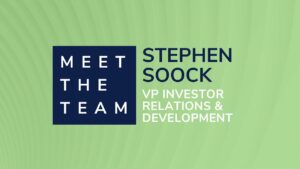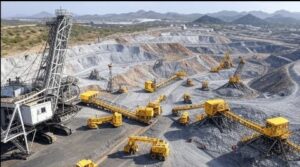Vancouver, BC – Timmins Gold Corp. (“Timmins Gold” or the “Company”) (TSX:TMM, NYSE MKT:TGD) is pleased to announce results of a recently completed National Instrument 43-101 Technical Report (“NI 43-101”) for the San Francisco Gold Mine in Sonora State, Mexico, prepared by Micon International Limited (“Micon”) of Toronto, Ontario. This news release provides details on the updated Mineral Reserves and Resources, as of July 1, 2016, and associated mine plan for the San Francisco Gold Mine.
All dollar amounts are expressed in U.S. dollars.
Highlights:
- 2016 production between 90,000 and 100,000 gold ounces at cash costs of $750 to $800 per gold ounce and total capital expenditures of $4 million.
- 2017 production between 65,000 and 70,000 gold ounces at cash costs of $900 to $950 per gold ounce and total capital expenditures of $4 million.
- 2018 production between 80,000 and 85,000 gold ounces at cash costs of $1,000 to $1,050 per gold ounce and total capital expenditures of $2 million.
- Life-of-mine production between 450,000 and 500,000 gold ounces at cash costs of $900 to $950 per gold ounce and total capital expenditures of approximately $18 million ($38 per ounce).
- Updated Reserves (after mining recovery and dilution) of 574,000 gold ounces grading 0.56 g/t at $1,250 per gold ounce; additionally, Stockpiled Ore of 61,000 gold ounces of grading 0.26 g/t.
- Updated Measured & Indicated Resources of 1.0 million gold ounces grading 0.58 g/t at $1,350 per gold ounce.
Timmins Gold President Arturo Bonillas states, “We are very pleased to provide guidance for the continued operations at San Francisco which will generate significant free cash flow and offers the Company continued exposure to the rising gold price environment. Over the course of the past year, we made significant reductions in costs and increased operating efficiencies, which contribute greatly to the estimated profitability of the new life of mine plan. Additionally, the low capital requirements throughout the mine life result in very attractive all-in costs. The Company has employed a $1,250 gold price for Reserves, but the potential for significant upside optionality is noteworthy. Based on a $1,350 gold price pit, the number of Resources increases by almost 70% compared to a $1,250 gold price pit.”
Mark Backens, Interim CEO adds, “Expected cash flow from operations will comfortably fund the pre-construction work program at Ana Paula while meaningfully contributing to the Company’s treasury. Gold production at San Francisco should continue well through the expected start of production at Ana Paula. Further, the cash flow from operations will be an important source of funding for Ana Paula construction.”
UPDATED SAN FRANCISCO MINE PLAN
Table 1 summarizes the mine plan from 2016 – 2023 (Q1). Actuals for January to June 2016 are incorporated.
Table 1 – San Francisco Gold Mine Plan Summary 2016 – 2023 (Q1)
Notes: [A] SF = San Francisco, LC = La Chicharra, SP = Stockpile. [B] Strip ratio includes all waste stripping; equal to waste tonnes mined divided by ore processed tonnes. [C] Includes cost of all waste stripping, and includes 0.5% NSR environmental royalty. [D] includes all development and sustaining capital (i.e. leach pad expansions, on-going maintenance, and resource drilling).
The new mine plan incorporates over two years of new exploration, infill and production drilling data, a reinterpretation of certain phases of the deposits, and mining and process engineering optimizations. Processing rates were determined based on mining rate constraints as well as an optimization of the haul distances and unit processing costs.
Although processing and production rates are lower from 2019 forward, the associated design and plan results in the lowest all-in costs and highest margin for the mine life. The lower grades and higher strip in 2019 and 2020 are offset through reduced unit mining and unit processing costs, keeping cash costs favourable. Unit mining costs starting in 2018 and forward benefit from significantly reduced haulage distances and, later on, backfilling scenarios. Unit processing costs, 2019 forward, benefit from lower throughputs (≤ 16 ktpd) as a result of: (i) the use of grid power only versus a combination of grid power and diesel-generated power at higher throughputs; and (ii) the use of one ADR plant versus two at higher throughputs. Total annual capital (development and sustaining) remains low throughout the mine life resulting in consistently favourable all-in costs.
MINERAL RESERVES & RESOURCES
Table 2 – San Francisco Gold Mine – Mineral Reserves at $1,250/oz gold as of July 1, 2016
| Cut-off (Au g/t) | Category (Notes A-B) | Tonnes (x1000) | Au g/t | Gold Ounces (x1000) | |
| San Francisco Pit | 0.19 | Proven | 16,666 | 0.58 | 313 |
| Probable | 8,267 | 0.54 | 144 | ||
| Total | 24,934 | 0.57 | 457 | ||
| La Chicharra Pit | 0.21 | Proven | 6,596 | 0.51 | 109 |
| Probable | 579 | 0.45 | 8 | ||
| Total | 7,175 | 0.51 | 117 | ||
| Total | Proven | 23,262 | 0.56 | 421 | |
| Probable | 8,846 | 0.54 | 153 | ||
| Total | 32,109 | 0.56 | 574 | ||
| Low Grade Stockpile | Total | 7,371 | 0.26 | 61 |
Notes: [A] Includes mining recovery (96% for San Francisco and 98% for La Chicharra) and dilution of up to 4%, varying based on pit phases. [B] Mine plan includes reserves and low-grade stockpile.
Table 3 – San Francisco Mine – Mineral Resources at $1,350/oz gold as of July 1, 2016
| Cut-off (Au g/t) | Category (Notes A – D) | Tonnes (x1000) | Au g/t | Gold Ounces (x1000) | |
| San Francisco Pit | 0.18 | Measured | 26,731 | 0.60 | 515 |
| Indicated | 15,239 | 0.61 | 299 | ||
| Measured & Indicated | 41,970 | 0.60 | 814 | ||
| Inferred | 246 | 0.72 | 6 | ||
| La Chicharra Pit | 0.17 | Measured | 9,902 | 0.50 | 160 |
| Indicated | 3,575 | 0.48 | 55 | ||
| Measured & Indicated | 13,477 | 0.50 | 215 | ||
| Inferred | 79 | 0.43 | 1 | ||
| Total Resources | Measured | 36,633 | 0.57 | 675 | |
| Indicated | 18,814 | 0.58 | 354 | ||
| Total Measured & Indicated | 55,447 | 0.58 | 1,029 | ||
| Inferred | 324 | 0.65 | 7 |
Notes: [A] Inclusive of Mineral Reserves. Mineral Resources that are not Mineral Reserves do not have demonstrated economic viability. [B] Mining recovery or dilution are not applied in this table. [C] Inferred resources in this table are pit-constrained. Inferred Resources have the potential to become additional Reserves at a future stage; however, due to the uncertainty that is attached to Inferred Mineral Resources, it cannot be assumed that all or any part of an Inferred Mineral Resource will be upgraded to an Indicated or Measured Mineral Resource as a result of continued exploration. [D] No known environmental, permitting, legal, title, taxation, socio-economic, marketing or political issues exist which would adversely affect the mineral resources estimated above, at this time.
The NI 43-101, by Micon, describing the details of the updated Reserve and Resource estimates and associated mine plan, will be filed on SEDAR (www.sedar.com) within 45 days from the date of this press release.
Technical Information and Qualified Person Notes
This press release was reviewed by Taj Singh, M.Eng, P.Eng, a Vice-President of the Company, who is recognized as a Qualified Person (“QP”) under the guidelines of NI 43-101. Mr. William Lewis, B.Sc, P.Geo, and Ing. Alan J. San Martin, MAusIMM(CP), both of Micon, both independent QPs, reviewed the Mineral Reserve and Mineral Resource Estimate. Mr. Mani M. Verma, M.Eng, P.Eng, of Micon, an independent QP, reviewed the mine plan and economics. Mr. Richard M. Gowans of Micon, an independent QP, reviewed the metallurgy section. Each of Mr. Lewis, Mr. San Martin, Mr. Verma, Mr. Gowans, and Mr. Singh have read and approved the contents of this news release.
About Timmins Gold
Timmins Gold is a Canadian gold mining company engaged in exploration, development and production in Mexico. Its principal assets include the producing San Francisco Mine in Sonora, and the development stage Ana Paula Project in Guerrero. The Company also has a portfolio of other exploration properties, all of which are in Mexico.
Contacts:
Timmins Gold Corp.
Mark Backens
Interim CEO and Director
604-638-8980
mark.backens@timminsgold.com
www.timminsgold.com
Neither the TSX nor its Regulation Services Provider (as that term is defined in the policies of the TSX) nor the New York Stock Exchange MKT accepts responsibility for the adequacy or accuracy of this news release.
Cautionary Note Regarding Forward-Looking Statements
Certain statements contained herein may constitute forward-looking statements and are made pursuant to the “safe harbor” provisions of the United States Private Securities Litigation Reform Act of 1995 and Canadian securities laws. Forward-looking statements are statements which relate to future events including: estimates, forecasts and statements as to management’s expectations with respect to, among other things, business and financial prospects, financial multiples and accretion estimates, future trends, plans, strategies, objectives and expectations, including with respect to production, exploration drilling, reserves and resources, exploitation activities and events or future operations. Information inferred from the interpretation of drilling results and information concerning mineral resource estimates may also be deemed to be forward-looking statements, as it constitutes a prediction of what might be found to be present when, and if, a project is actually developed.
In some cases, you can identify forward-looking statements by terminology such as “may”, “should”, “expects”, “plans, “anticipates”, believes”, “estimates”, “predicts”, “potential”, or “continue” or the negative of these terms or other comparable terminology. These statements are only predictions and involve known and unknown risks, uncertainties and other factors that may cause our or our industry’s actual results, level of activity, performance or achievements to be materially different from any future results, levels of activity, performance, or achievements expressed or implied by these forward-looking statements.
While these forward-looking statements, and any assumptions upon which they are based, are made in good faith and reflect our current judgment regarding the direction of our business, actual results will almost always vary, sometimes materially, from any estimates, predictions, projections, assumptions or other future performance suggestions herein. Except as required by applicable law, the Company does not intend to update any forward-looking statements to conform these statements to actual results.
Cautionary Note to United States Investors
The Company is subject to the reporting requirements of the applicable Canadian securities laws, and as a result it reports its mineral reserves and resources according to Canadian standards. Canadian reporting requirements for disclosure of mineral properties are governed by NI 43-101. The definitions of NI 43-101 are adopted from those given by the Canadian Institute of Mining, Metallurgy and Petroleum. U.S. reporting requirements are governed by Industry Guide 7 (“Guide 7”) of the Securities and Exchange Commission (the “Commission”). These reporting standards have similar goals in terms of conveying an appropriate level of confidence in the disclosures being reported, but embody different approaches and definitions.
For example, under Industry Guide 7, mineralization may not be classified as a “reserve” unless the determination has been made that the mineralization could be economically and legally produced or extracted at the time the reserve determination is made. In particular, the Company reports “resources” in accordance with NI 43-101.
While the terms “Mineral Resource”, “Measured Mineral Resource”, “Indicated Mineral Resource” and “Inferred Mineral Resource” are recognized and required by Canadian regulations, they are not defined terms under standards of the Commission and generally, U.S. companies are not permitted to report resources in documents filed with the Commission. As such, certain information contained in this press release concerning descriptions of mineralization and resources under Canadian standards is not comparable to similar information made public by United States companies subject to the reporting and disclosure requirements of the Commission.
In addition, an Inferred Mineral Resource has a great amount of uncertainty as to its existence and as to its economic and legal feasibility, and it cannot be assumed that all or any part of an Inferred Mineral Resource will ever be upgraded to a higher category. Under Canadian rules, estimates of Inferred Mineral Resources may not form the basis of any economic studies beyond Preliminary Economic Assessment.
It cannot be assumed that all or any part of Measured or Indicated Resources will ever be converted into Mineral Reserves, and it cannot be assumed that all or any part of an Inferred Mineral Resource exists, or is economically or legally mineable. In addition, the definitions of “Proven Mineral Reserves” and “Probable Mineral Reserves” under CIM standards differ in certain respects from the standards of the Commission.
Original Article: http://www.timminsgold.com/news/index.php?&content_id=370

















